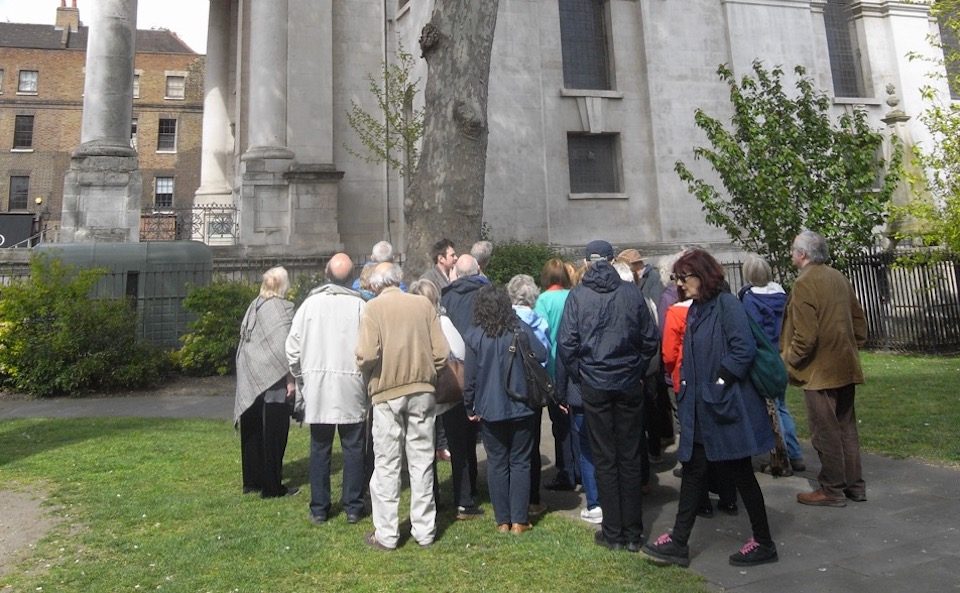April 2017
Why would a coach full of educated and erudite Regency Society members, sophisticated and with excellent taste head up to London to view “[mere] Gothic heaps of stone without form or order [which] meet with contempt from the best and worst tastes alike”?
By the end of the day all of us felt confident enough to poo poo the above view of James Ralph, (expressed in 1783) of churches designed by Nicholas Hawksmoor (c.1661-1736).
The indefatigable David Robson had organised a trip to look at a selection of Hawksmoor churches, a result of the devastation after the Great Fire and the subsequent Act for the building of Fifty New Churches in the Cities of London and Westminster or the Suburbs thereof. Budgetary concerns meant that only twelve churches were completed, of which six were by Hawksmoor alone and two in collaboration with John James. Not only had David prepared us by circulating books on Hawksmoor in the coach, but we were ably guided by academic and author Owen Hopkins who gave us each an informative handout.
David and Owen had managed to negotiate visits to the interiors of most of the buildings and we worked from east to west, starting with the simpler St Alfege, Greenwich and ending with the more ornate St George’s Bloomsbury (with a fascinating diversion to walk the length of Fournier Street, Spitalfields where we admired the well-preserved houses of the Huguenot silk weavers.)
Owen told us that Vanburgh stressed that a religious building should have ‘the most solemn and awfull appearance’ so we came prepared. We gradually got our Hawksmoor eye in and were able to identify his favourite trademarks and details: the beautiful white Portland stone, the deep set windows and recesses throwing up a dramatic interplay of light and shadow, the substantial yet delicate towers and spires, the use of ‘Art Deco’ lozenge and oblong shapes, the fake Roman funeral altars, the voussoirs (keystones) of ever increasing proportions, his tricks with the orientation of entrances and altars, the recycling of unused features from one church to the next…
We learned that the interior of St Alfege had been restored after the blitz by Sir Albert Richardson, a past President of the Regency Society.
At the rain-damaged St Anne’s, Limehouse the Rector told us of his plans to reorient the altar to better engage with the congregation – a plan that Hawksmoor would no doubt have approved of, since one of his preoccupations was to construct his churches so the interiors felt compact and intimate.
All that remains of the original St George in the East is the external shell but most our group found the 1950s interior with its plain glass window and retro look pleasingly simple.
We marvelled at the external beauty of Christ Church, Spitalfields as the sun and shadow threw the round windows into high relief.
We didn’t have time to visit St Mary Woolnoth, but did have the bonus of driving past the simple perfection of St Luke Old Street.
Our final stop, and perhaps the most impressive church of all was St George’s, Bloomsbury. We were able to climb to the gallery and admire the internal space from above but, had it not been for David’s reminder and Owen’s handout most of us would not have really appreciated the tower and spire with the outsize lion and unicorn, and topped by a statue of George I. You can see the tower featured in Hogarth’s 1751 engraving Gin Lane.
Many thanks to David and Owen for such an informative and enjoyable day.
Alison Minns

